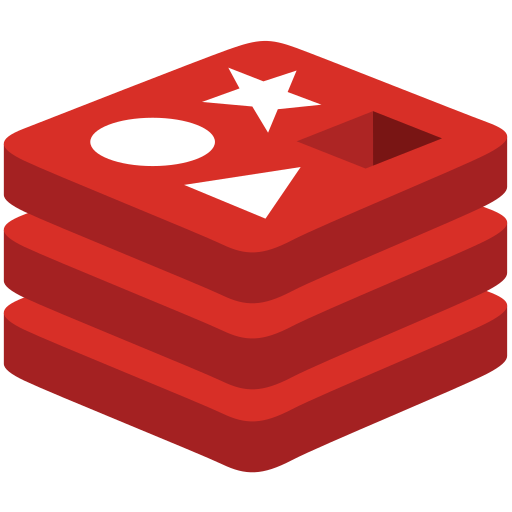Zilliz Cloud vs Redis Vector
Comparing managed Milvus service with in-memory vector search in 2025
Share to AI
Ask AI to summarize and analyze this article. Click any AI platform below to open with a pre-filled prompt.
Our Recommendation

Zilliz Cloud
Managed vector database with GPU support
Best for:
Large-scale persistent vector search with advanced features

Redis Vector
Lightning-fast in-memory vector search
Best for:
Real-time applications with cache and vector needs
Quick Decision Guide
Choose Zilliz Cloud if you need:
- • Persistent vector storage
- • GPU acceleration
- • Scale beyond memory limits
- • Advanced filtering features
Choose Redis if you need:
- • Sub-millisecond latency
- • Cache + vector combo
- • Simple deployment
- • Real-time operations
Quick Comparison
| Feature |  Zilliz Cloud Zilliz Cloud |  Redis Vector Redis Vector |
|---|---|---|
| Storage Type | Persistent | In-Memory |
| Query Latency | 8-30ms | <1ms |
| Max Vectors | 10B+ | 10M per node |
| GPU Support | Yes | No |
| Starting Price | $65/month | $40/month |
| Cache Support | No | Native |
| Index Types | Multiple | HNSW, FLAT |
| Scaling Model | Horizontal | Vertical |
Architecture & Design Philosophy
Zilliz Cloud Architecture
Persistent Design
Built on Milvus with cloud-native enhancements. Separates compute and storage for scalability.
Infrastructure
- • Distributed architecture
- • Persistent storage layer
- • GPU acceleration options
- • Kubernetes-based
Key Insight: Zilliz Cloud prioritizes scale and persistence over raw speed.
Redis Architecture
In-Memory First
Everything in RAM for maximum performance. RediSearch module adds vector capabilities.
Infrastructure
- • Single-threaded core
- • Memory-only by default
- • Optional persistence
- • Master-replica model
Key Insight: Redis trades persistence and scale for unmatched speed.
Performance Deep Dive
Performance Comparison (1M vectors, 768 dimensions)
Zilliz Cloud Performance
Redis Performance
Note: Redis performance assumes all data fits in memory. Performance degrades significantly when using disk-based persistence.
Scaling Characteristics
Memory vs Disk Trade-offs
Zilliz Cloud
Unlimited scale with persistent storage. Performance consistent regardless of dataset size.
Redis
Limited by available RAM. Exceptional performance for datasets that fit in memory.
GPU Acceleration Impact
Zilliz Cloud
GPU option provides 3-5x performance boost for similarity search workloads.
Redis
No GPU support. Already optimized for CPU-based in-memory operations.
Total Cost of Ownership (TCO)
Cost Comparison by Scale
| Dataset Size | Zilliz Cloud | Redis |
|---|---|---|
| 100K vectors | $65/month | $40/month |
| 1M vectors | $65/month | $100/month (8GB) |
| 10M vectors | $240/month | $800/month (64GB) |
| 100M vectors | $800/month | Not practical |
| Cost Efficiency | Better at scale | Better for small data |
Zilliz Cloud Economics
- • Predictable costs regardless of size
- • No memory premium
- • GPU option for performance
- • Scales linearly
Redis Economics
- • Cost-effective for small datasets
- • Expensive memory requirements
- • Multi-purpose value (cache + vectors)
- • Exponential cost growth
Developer Experience Comparison
Zilliz Cloud DX
Getting Started
from pymilvus import connections, Collection # Connect to Zilliz Cloud connections.connect( alias="default", uri="your-endpoint", token="your-token" ) # Create collection collection = Collection( name="products", schema=schema ) # Insert vectors collection.insert([vectors, metadata])
Developer Benefits
- ✓ Unlimited scale
- ✓ Rich feature set
- ✓ Persistent by default
- ✓ GPU acceleration
Redis DX
Getting Started
import redis
from redis.commands.search import VectorField
# Connect
r = redis.Redis()
# Create index
r.ft("idx").create_index([
VectorField("vector", "HNSW", {
"TYPE": "FLOAT32",
"DIM": 768,
"DISTANCE_METRIC": "COSINE"
})
])
# Add vectors instantly
r.hset("doc1", mapping={
"vector": vector_bytes
}) Developer Benefits
- ✓ Lightning fast
- ✓ Simple operations
- ✓ Familiar Redis commands
- ✓ Cache integration
Real-World Use Case Analysis
When Zilliz Cloud Excels
1. Large-Scale Image Search
Photo platform needs:
- • 1B+ image embeddings
- • GPU-accelerated search
- • Complex metadata filtering
Zilliz's scale essential
2. Document Repository
Enterprise requirements:
- • Persistent storage
- • Growing dataset
- • Advanced filtering
Zilliz's features crucial
When Redis Dominates
1. Real-Time Personalization
E-commerce needs:
- • Sub-millisecond response
- • Session caching
- • Hot product vectors
Redis speed unmatched
2. Gaming Matchmaking
Real-time gaming:
- • Player similarity matching
- • Instant updates
- • Leaderboard integration
Redis latency critical
Hybrid Architecture Pattern
Combining Zilliz Cloud + Redis
Many teams use both databases together for optimal performance:
Zilliz Cloud Role
- • Complete vector dataset storage
- • Complex similarity searches
- • Historical data queries
- • Batch processing
Redis Role
- • Hot vector caching
- • Real-time queries
- • Session management
- • Frequently accessed vectors
💡 Implementation Pattern: Use Redis for the top 10% most accessed vectors (hot cache) and Zilliz Cloud for the complete dataset. This provides sub-millisecond latency for common queries while maintaining unlimited scale.
Decision Matrix
| Requirement | Best Choice | Reasoning |
|---|---|---|
| Sub-millisecond latency | Redis | In-memory performance |
| 100M+ vectors | Zilliz Cloud | Unlimited scale |
| GPU acceleration needed | Zilliz Cloud | GPU support available |
| Cache + vectors | Redis | Unified system |
| Complex filtering | Zilliz Cloud | Advanced capabilities |
| Cost-sensitive at scale | Zilliz Cloud | Better economics |
The Verdict
Zilliz Cloud: The Scalable Foundation
Zilliz Cloud excels as a persistent, scalable vector database that can handle datasets of any size. Its GPU support, advanced filtering, and managed operations make it ideal for production workloads where scale and features matter more than microsecond latency.
Bottom Line: Choose Zilliz Cloud for large-scale persistent vector search with advanced features.
Redis: The Speed Demon
Redis Vector Search delivers unmatched performance for datasets that fit in memory. Its sub-millisecond latency and ability to combine caching with vector search make it perfect for real-time applications with moderate data sizes.
Bottom Line: Choose Redis when sub-millisecond latency is critical and data fits in memory.
🎯 Our Recommendation
For most production vector search workloads, Zilliz Cloud's scalability and features make it the better choice. However, if your dataset fits in memory and you need sub-millisecond latency, Redis is unbeatable. Consider using both in a hybrid architecture for optimal results.
Need Help Choosing Your Vector Database?
Our experts can help you implement the right vector search solution for your performance and scale requirements.